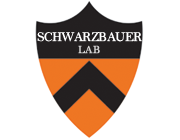A Simple Nanoscale Interface Directs Alignment of a Confluent Cell Layer on Oxide and Polymer Surfaces.
Type
Templating of cell spreading and proliferation is described that yields confluent layers of cells aligned across an entire two-dimensional surface. The template is a reactive, two-component interface that is synthesized in three steps in nanometer thick, micron-scaled patterns on silicon and on several biomaterial polymers. In this method, a volatile zirconium alkoxide complex is first deposited at reduced pressure onto a surface pattern that is prepared by photolithography; the substrate is then heated to thermolyze the organic ligands to form surface-bound zirconium oxide patterns. The thickness of this oxide layer ranges from 10 to 70 nanometers, which is controlled by alkoxide complex deposition time. The oxide layer is treated with 1,4-butanediphosphonic acid to give a monolayer pattern whose composition and spatial conformity to the photolithographic mask are determined spectroscopically. NIH 3T3 fibroblasts and human bone marrow-derived mesenchymal stem cells attach and spread in alignment with the pattern without constraint by physical means or by arrays of cytophilic and cytophobic molecules. Cell alignment with the pattern is maintained as cells grow to form a confluent monolayer across the entire substrate surface.

